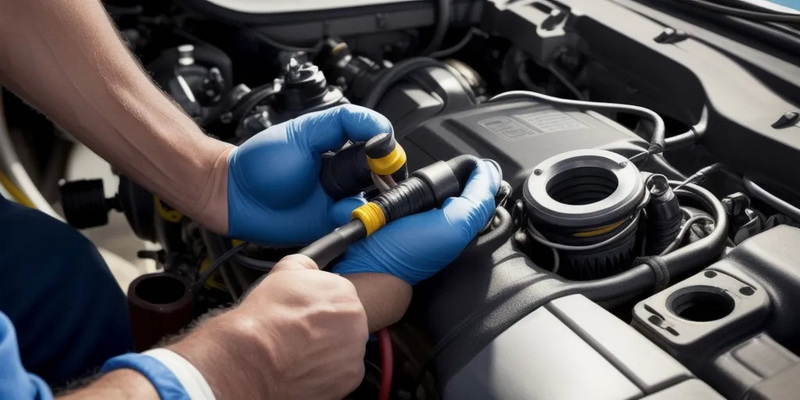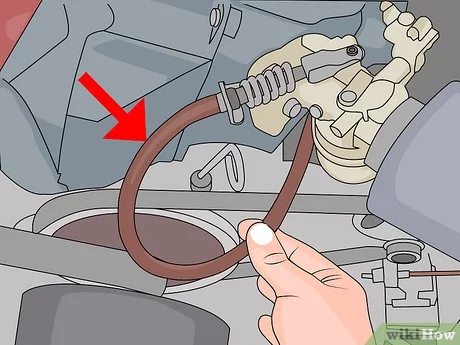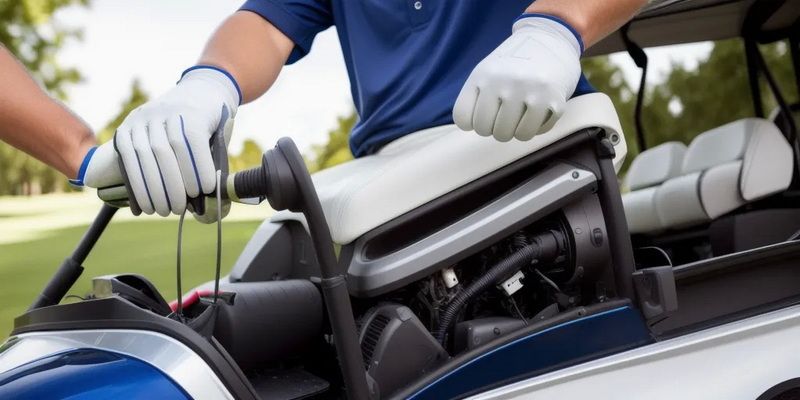Content Menu
● Understanding the Governor
>> Types of Governors
● Tools Required
● Step-by-Step Guide to Remove the Governor
>> Step 1: Safety First
>> Step 2: Locate the Governor
>> Step 3: Disconnect the Throttle Cable
>> Step 4: Remove the Governor
>> Step 5: Adjust Throttle Cable Tension
>> Step 6: Reconnect Everything
>> Step 7: Test Your Golf Cart
● Important Considerations
● Conclusion
● Frequently Asked Questions (FAQs)
>> 1. Is it legal to remove the governor from my golf cart?
>> 2. Will removing the governor void my warranty?
>> 3. Can I reinstall the governor if needed?
>> 4. What are some risks associated with removing the governor?
>> 5. How can I ensure my golf cart remains safe after removing the governor?
Removing the governor from an electric golf cart can enhance its speed and performance, allowing for a more exhilarating ride. However, it is essential to proceed with caution, as this modification may void warranties and could have legal implications depending on local regulations. This comprehensive guide will walk you through the process of removing the governor from your electric golf cart, including necessary tools, steps, safety precautions, and testing methods.

Understanding the Governor
The governor in an electric golf cart is a device designed to limit the maximum speed of the vehicle. It ensures that the cart operates within safe parameters, preventing excessive speed that could lead to accidents or mechanical failures. The governor can be mechanical or electronic, depending on the model of the golf cart.
Types of Governors
- Mechanical Governors: These are typically spring-loaded devices that physically restrict throttle movement.
- Electronic Governors: These are integrated into the cart's control system and can be adjusted through programming or software.
Tools Required
Before you begin the removal process, gather the following tools:
- Screwdrivers (flathead and Phillips)
- Wrench set
- Pliers
- Socket set
- Safety goggles
- Gloves
Step-by-Step Guide to Remove the Governor
Step 1: Safety First
Ensure that your golf cart is turned off and disconnected from any power source. Wear safety goggles and gloves to protect yourself during the process.
Step 2: Locate the Governor
The governor is usually located near the motor or on the rear axle of the golf cart. Refer to your owner's manual for specific details about your model.

Step 3: Disconnect the Throttle Cable
1. Identify the Throttle Cable: Follow it from the accelerator pedal to where it connects to the governor.
2. Loosen the Clamp: Use a screwdriver or pliers to loosen any clamps holding the throttle cable in place.
3. Remove the Cable: Carefully slide the cable out of its connection point on the governor.
Step 4: Remove the Governor
1. Unscrew Mounting Hardware: Depending on your golf cart's design, you may need to remove screws or bolts securing the governor in place.
2. Lift Out the Governor: Once all fasteners are removed, gently lift the governor out of its mounting location.
Step 5: Adjust Throttle Cable Tension
After removing the governor, you may need to adjust the throttle cable tension to ensure optimal performance at higher speeds. This can usually be done by adjusting a screw or clamp near where the throttle cable connects to the motor.
Step 6: Reconnect Everything
Reconnect the throttle cable back to its original position on the motor. Ensure all connections are secure before proceeding.
Step 7: Test Your Golf Cart
1. Check Battery and Wiring: Ensure that your battery is fully charged and all wiring is secure.
2. Inspect Brakes: Make sure that your braking system is functioning correctly before taking your cart for a test drive.
3. Take a Test Drive: Carefully drive your golf cart in a safe area to test its performance without any speed restrictions.

Important Considerations
- Warranty Implications: Removing or modifying your governor may void any existing warranties on your golf cart.
- Legal Regulations: Check local laws regarding golf cart speed limits before making modifications.
- Safety Precautions: Increased speed can affect handling and braking distances; always prioritize safety when operating modified vehicles.
Conclusion
Removing the governor from an electric golf cart can significantly enhance its speed and performance, making for a more enjoyable driving experience. However, it is crucial to consider safety, legality, and warranty implications before proceeding with such modifications. Always ensure that any changes made do not compromise safety for speed.

Frequently Asked Questions (FAQs)
1. Is it legal to remove the governor from my golf cart?
Yes, but it depends on local regulations regarding vehicle modifications. Always check local laws before proceeding.
2. Will removing the governor void my warranty?
Yes, most manufacturers consider removing or modifying components like governors as grounds for voiding warranties.
3. Can I reinstall the governor if needed?
Yes, if you keep all parts removed during modification, you can reinstall them later if necessary.
4. What are some risks associated with removing the governor?
Risks include increased likelihood of accidents due to higher speeds, potential mechanical failures, and legal ramifications if operating outside local regulations.
5. How can I ensure my golf cart remains safe after removing the governor?
Regularly inspect brakes, tires, and electrical systems; always drive within safe limits, and consider consulting with professionals for modifications.











































